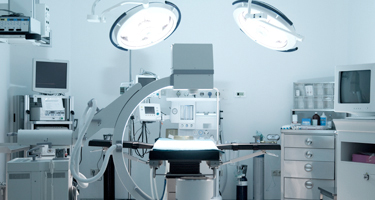Breast Biopsy
What is a Breast Biopsy?
A biopsy is a minimally invasive procedure that removes a sample of abnormal tissue to determine whether it is benign or malignant. A biopsy can be performed on many different areas of the body, but is commonly used to diagnose, and sometimes treat, lumps found in breast tissue.
A breast biopsy may be performed after abnormalities have been detected during a self-exam, or after a mammogram or other imaging test has been performed. Other than surgical biopsy, there are several different types of biopsies available for removing abnormal tissue. Many of these procedures are performed with ultrasound or MRI guidance to ensure precise needle placement and minimal damage to surrounding healthy tissue.
The Benefits of Breast Biopsy
A breast biopsy allows for a determination to be made as to whether abnormal tissue is cancerous or noncancerous.
In addition to its diagnostic purpose, a biopsy can remove small tumors or other abnormalities that are found during the procedure, eliminating the need for additional surgery. Patients benefit from shorter recovery times and less surgical trauma. Removal through biopsy also saves a patient money by diagnosing and treating her condition in one simple procedure.
The Breast Biopsy Procedure

During a breast biopsy, the patient usually lies on her stomach on a special examination table with openings that allow access to the breasts. The procedure is performed from below the table. A biopsy may also be performed with the patient sitting upright in a chair.
Breast biopsy is performed on an outpatient basis using local anesthesia. A core needle biopsy removes only one sample of breast tissue per needle insertion, while a vacuum-assisted biopsy can collect multiple samples from a single insertion. The removed breast tissue is sent to a lab for review under a microscope, and results are usually available after 1 to 2 days. Most procedures take less than an hour to perform, and patients can return home shortly thereafter.
Pressure or mild discomfort may be experienced during the exam; numbness may be experienced afterward as the anesthesia wears off. There is no suturing needed after a breast biopsy because the incision is so small. Patients can usually return to work and other regular activities after a minimal recovery period.
Types of Breast Biopsies
There are several types of needle biopsies, each specialized to test a particular type of abnormality.
Core Needle Breast Biopsy
A core needle breast biopsy is recommended when a nodule is seen only or most clearly with ultrasound. Local anesthetic is applied, a small incision is made and the ultrasound-guided needle is inserted. Small pieces of affected tissue are removed swiftly and painlessly, and sent for testing.
Sonotome
Sonotome (ultrasound-guided) biopsy is a 10 to 15-minute procedure performed with local anesthesia and a Mammotome® (vacuum-assisted) needle inserted through a small incision in the skin. Tissue samples are taken, and a titanium clip is inserted to mark the location in case surgery is required. Typically, the entire abnormality is removed.
Stereotactic Mammotome Biopsy
This type of biopsy is most often performed when a mass can be detected with mammography but not with ultrasound. This procedure involves compressing the targeted area with a paddle and administering local anesthesia before inserting a Mammotome (vacuum-assisted) needle. The abnormal tissue is removed swiftly and painlessly with suction. The entire abnormality is removed in most of these procedures.
Fine-Needle Aspiration Biopsy
During an aspiration procedure, a small needle is inserted to remove a sample of the abnormal tissue, without the need for anesthesia. This procedure is most often performed for very small masses, and can help determine if the abnormality is a fluid-filled cyst or a solid mass.
Cyst Aspiration
This 5-minute procedure drains fluid from a cyst (fluid-filled nodule) using an ultrasound-guided needle. Local anesthesia is usually not needed. An X-ray may be taken to ensure that the cyst has collapsed. The fluid is sent to pathology to confirm that it is benign. Results from the tests are usually available within 24 to 48 hours.
Our Surgeons Specializing in Breast Conditions

- Allen Agapay, MD
- General Surgeon
- Peoria
- Learn More

- Nathan Bodily, MD
- General Surgeon
- Gilbert & Mesa
- Learn More

- Ravia Bokhari, MD, FACS
- General Surgeon
- West Phoenix
- Learn More

- Charles Castillo, MD, FACS
- General Surgeon
- Central Phoenix
- Learn More

- Susan Cortesi, MD, FACS
- General Surgeon
- Mesa & Scottsdale
- Learn More

- Rita Hadley, MD, FACS, PhD
- General & Bariatric Surgeon
- Mesa
- Learn More

- Jon King, MD, FACS
- General Surgeon
- West Phoenix
- Learn More

- David Smith, MD, FACS
- General Surgeon
- West Phoenix
- Learn More

